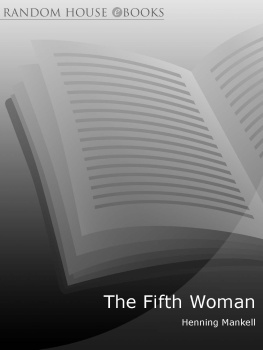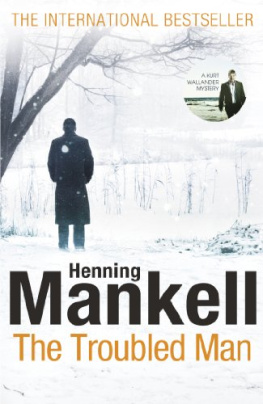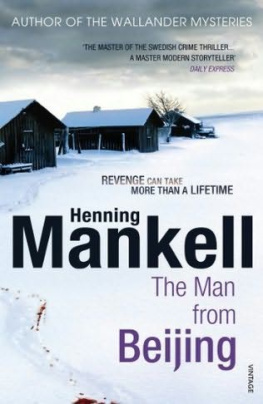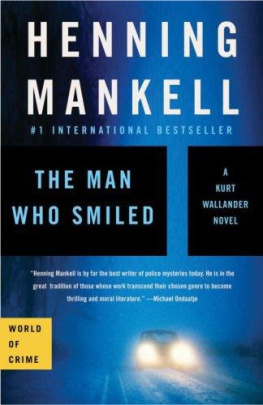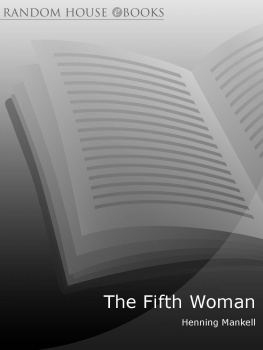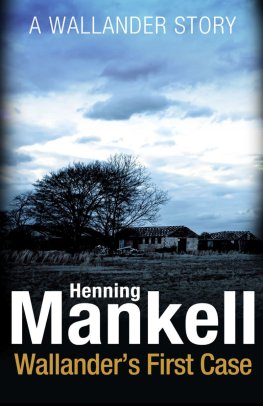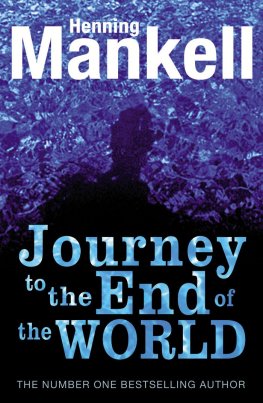
Henning Mankell
I Die, but the Memory Lives on
A Personal Reflection on Aids
Translated from the Swedish by Laurie Thompson
One night in June in 2003 I dreamed about dead people in a coniferous forest. Everything in the dream is very clear. The smell of moss, steam rising after rain. But it isn't summer. Fungi are growing around the roots of the trees. The dream landscape is autumnal. September, possibly October.
Unseen birds take off from damp branches.
My dream is about dead people in a coniferous forest. The faces of the dead people are let into the tree trunks. It is as if I were walking through a gallery of unfinished wood sculptures. Or I am in a studio hastily abandoned by the artist.
The faces are contorted, but no screams come from their half-open mouths, only silence.
They are black faces, African faces, yet the forest is in Sweden.
The dream is unexpected. There again, are not all dreams unexpected? No dreams can be planned nor do they turn up to order. The messages of the night can never be prepared for, nor can they be averted when they do come. These messages often disappear without trace, without their meaning being interpreted.
Dreams are like skilful jesters: whimsical, surprising, never quite possible to keep tabs on.
The dream fills me with uncertainty. But one thing is unambiguous, on one point there is no uncertainty.
The black people whose faces can be made out among the tree trunks have died of Aids. The skin is tightly stretched over the bones of their faces. The dead people are thin, fading away, in great pain. Nowhere is there a trace of calm or resignation.
Their screams are silent.
I often dream about death. My own death, the deaths of others, the death of everybody. The images are usually clear and distinct. Realistic, you might say. A dead person is dead. The dreams are most often well scrubbed, stripped of symbolic implications. There is no room for metaphysics. My dream-maker does not allow any religious or supernatural excursions.
That is why I am surprised by this coniferous forest with its remarkable, lifeless faces. It is as if the dream has intruded upon my subconscious, is there without permission.
Afterwards, when I wake up, it strikes me that nothing like it has ever before taken place in my brain while I've been asleep. Not at any rate according to what I have been able to remember of my dreams afterwards.
Most dreams evaporate into their own secret archives, to which nobody has a key. But that those archives exist I have no doubt.
Dreams can be deceptive. Hard to pin down. Not least when they have dressed themselves up as real life.
This dream upsets me. It seems to me that the images of the conifers and all the dead people have been visiting the inside of my head by mistake. As if they had no business to be there.
It is dawn, one morning early in June, in 2003. I am in a borrowed house right on the sea. In the grey light of dawn beyond the window, I glimpse a deer through the mist. When I move my arm only slightly, it bounds away out of sight. The sea laps almost noiselessly against the shore. The strong wind from the previous evening has slackened or shifted to another direction. It is so early that the vigilant terns have not yet started their screeching. I go down to the shore and think about the dream that has woken me.
The images are clear. They follow one another like glittering links in a carefully directed film. Not a skimped job. It is a plot in which I take part as well as observing it.
My dream, as I recall it:
I am walking along the edge of a coniferous forest. It is somewhere in southern Norrland, in the north of Sweden. The light is hazy, the sky is grey, as after a long spell of rain. Afternoon, early autumn. I can hear a bird flapping its wings somewhere, taking off from a branch and vanishing.
The dream changes at that moment. I recognise the scene, but I also have the impression that I have never been there before. There is a moment of hesitation: maybe I ought to steer clear of the path leading into the trees. But I follow it even so, walk down a path which might not be a path but only my imagination. The air among the trees is heavy with smells. The forest is soundless, not even the usual little rustlings can be heard.
It is a gentle sort of dream, nothing is threatening or dangerous. I walk peacefully through the soft, damp mossy woodland. The smells are acrid, lively. A cone falls from a tree.
Then suddenly I notice that the trees are not trees, but that they are human beings. They are partly carved out of the tree trunks, they are like half-finished wooden sculptures. An impression flutters past: a great many sculptors have lately been at work on these trees. But something has happened that something has made them run away as fast as they can go. They were trying to help these images or people out of the wood. The people trying to get out of the tree trunks have been abandoned, and now they are stuck in the trunks like dead, half-rotten remains. Broken branches are the arms, the needles their hair, the cones are maybe eyes or bones from their elbows. These are people who have themselves been running away. But they were caught and died attempting to escape.
In my dream, I wonder why I am not afraid.
I contemplate all these dead people, one by one. Slowly I make my way through this remarkable gallery of people who are half-finished sculptures carved out of trees in a northern Swedish forest.
But there is something odd about them. Their faces are black. And I know they have died of Aids.
I am still calm, I feel no fear.
Most of them are children, or teenagers; a few are very old. But all of them are dead. Their faces are not giving up their secrets. None of them speaks to me. I begin to retrace my steps. The bird I heard seems to come back to his perch again. The flapping of its wings fades. Then it is as if the sound tape of the dream has been cut. Cleanly. I stop and I have the feeling there is something behind me. Something I ought to see.
When I turn, I find myself looking into Aida's face.
And then I wake up.
Soon afterwards I stand by the window and gaze out into the whiteness. In mist, all landscapes can seem similar. The floorboards in my room are pine, with that distinctive smell. They are cold under my feet. It is as if the sensation of damp moss was still with me. But even so, the landscape out there in the mist could be Africa.
That's the way it is: really clear dreams accompany you out into reality, they take on a life of their own, freed of their subconscious origin.
It is two weeks since I met Aida in her village, a few miles north of Kampala in Uganda. The earth there was red and the banana trees grew in dense clumps. It is two weeks since she showed me where she had hidden her mango plant.
I had gone to Kampala by car from the airport in Entebbe. Kampala is a cluster of hills, seven or eight, and tucked tightly between these hills dotted in elegant houses with large gardens was the town itself, with far too much traffic, far too many people.
Africa is always a conflict of opposites, of urban muddle and vast, empty regions.
I say Africa, but Africa can be divided into any number of parts. Some countries within this continent are the size of all of western Europe. There is no clear-cut, single entity that you can think of as Africa. This continent has many faces, but wherever I have been the dense urban muddle and vast, empty spaces have always been side by side.
Next page

